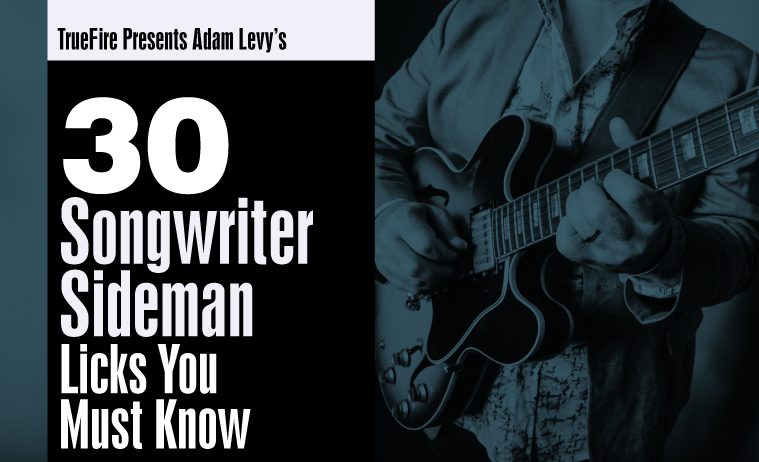Supporting a songwriter as the sideman in a duo or band situation is an artful skill that can be very challenging. Usually, there’s a rhythm guitarist — perhaps the singer — playing fairly simple chords and rhythms. Your job as the sideman is to color and embellish the performance of the song without distracting the audience’s attention.
Adam Levy’s collection of Songwriter Sideman Licks is an essential, versatile vocabulary of rhythm parts, fills, and single-note lines for anyone performing or recording in a sideman capacity. Here are a few lesson studies:
Cascade
Capoing halfway up the fretboard is a great way to get up and out of the way of another guitarist (the singer/songwriter, for example) who’s strumming chords in open position. That’s the primary tactic here. Remember, Capo VII means the chord shapes seem to be in the key of G but you’re actually in the key of D, a fifth higher. Also, this lick is spacious — leaving plenty of room for other elements in an arrangement (voice, bass, drums, and so on). >> Link to Lesson Tab
Busy Body
Sometimes the job of a side-person is to add energy to the overall groove. If someone is already holding down the basic chords with a steady pulse, a rhythmic second part like this one can keep things moving. Utilizing 2 and 3-part voicings — in the middle or upper-middle register — can keep the harmony from becoming cluttered. >> Link to Lesson Tab
Wide Angle
The chord shapes here are spread wide. The effect is more orchestral than guitaristic. You can make it sound even more so by using a volume pedal (or the volume control on your guitar) to swell into each chord. >> Link to Lesson Tab


